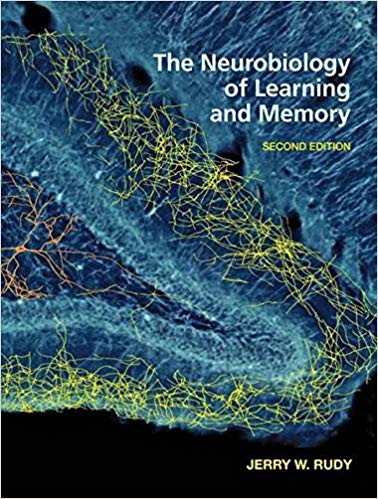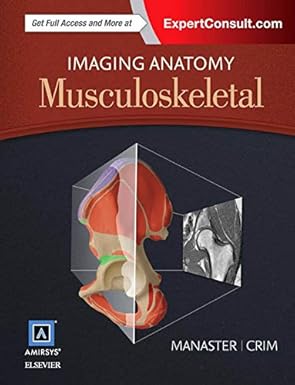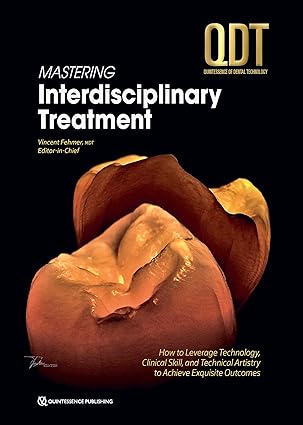To understand how the brain learns and remembers requires an integration of psychological concepts and behavioral methods with mechanisms of synaptic plasticity and systems neuroscience. The Neurobiology of Learning and Memory, Second Edition, provides a synthesis of this interdisciplinary field. Each chapter makes the key concepts transparent and accessible to a reader with minimal background in either neurobiology or psychology and is extensively illustrated with full-color photographs and figures depicting important concepts and experimental data. Like the First Edition, the Second Edition is organized into three parts. However, each part has been expanded to include new chapters or reorganized to incorporate new findings and concepts.
Part One introduces the idea that synapses modified by experience provide the basis for memory storage. It next describes the long-term potentiation methodology used to study how synapses are modified and concepts needed to understand the organization of synapses. The remaining chapters are organized around the idea that the synaptic changes that support long-term potentiation evolve in four overlapping stages referred to as (a) generation, (b) stabilization, (c) consolidation, and (d) maintenance. The goal of each chapter is to reveal that each stage depends on unique molecular processes and to describe what they are.
Part Two builds on this foundation to show how molecules and cellular processes that have been identified from studies of synaptic plasticity also participate in the making of memories. It discusses some of the basic conceptual issues researchers face in trying to relate memory to synaptic molecules and describes some of the behavioral and neurobiological methods that are used. The chapters describing the processes involved in memory formation and consolidation have been extensively modified to provide a more detailed account of the molecular events that are engaged to ensure that established memories endure. The chapters on memory modulation and the fate of retrieved memories have been extensively modified to provide a more in-depth account of the relevant processes.
Part Three is organized around the multiple memory systems view--that different neural systems have evolved to store the content contained in our experience. It features discussion of the medial-temporal hippocampal system that supports episodic memory, the concept of systems consolidation, and its relationship to Ribot's law--that memories become resistant to disruption as they age. The cortical-striatal system and its relationship to what are called behavioral actions and habits is described, and the book ends with a discussion of neural systems involved in the acquisition and removal of emotional memories.
چکیده فارسی
برای درک اینکه مغز چگونه یاد میگیرد و به یاد میآورد، نیازمند ادغام مفاهیم روانشناختی و روشهای رفتاری با مکانیسمهای شکلپذیری سیناپسی و علم اعصاب سیستمها است. زیست عصبی یادگیری و حافظه، ویرایش دوم، ترکیبی از این زمینه بین رشته ای را ارائه می دهد. هر فصل مفاهیم کلیدی را شفاف و قابل دسترس برای خواننده با حداقل پیشینه در عصبشناسی یا روانشناسی میکند و بهطور گسترده با عکسها و شکلهای تمام رنگی که مفاهیم مهم و دادههای تجربی را به تصویر میکشد، نشان داده شده است. مانند نسخه اول، نسخه دوم در سه بخش سازماندهی شده است. با این حال، هر بخش گسترش یافته است تا شامل فصول جدید شود یا سازماندهی مجدد شده است تا یافته ها و مفاهیم جدید را در بر گیرد.
بخش اول این ایده را معرفی میکند که سیناپسهای اصلاح شده توسط تجربه، مبنای ذخیرهسازی حافظه را فراهم میکنند. سپس روش تقویت بلندمدت مورد استفاده برای مطالعه نحوه اصلاح سیناپس ها و مفاهیم مورد نیاز برای درک سازماندهی سیناپس ها را شرح می دهد. فصلهای باقیمانده حول این ایده سازماندهی شدهاند که تغییرات سیناپسی که از تقویت طولانیمدت پشتیبانی میکنند در چهار مرحله همپوشانی به نامهای (الف) تولید، (ب) تثبیت، (ج) تثبیت، و (د) نگهداری تکامل مییابند. هدف هر فصل این است که آشکار کند که هر مرحله به فرآیندهای مولکولی منحصر به فرد بستگی دارد و توضیح دهد که آنها چه هستند.
بخش دوم بر این پایه استوار است تا نشان دهد چگونه مولکولها و فرآیندهای سلولی که از مطالعات پلاستیسیته سیناپسی شناسایی شدهاند نیز در ساختن خاطرات مشارکت دارند. این مقاله برخی از مسائل مفهومی اساسی را که محققان در تلاش برای ارتباط حافظه با مولکولهای سیناپسی با آن مواجه هستند مورد بحث قرار میدهد و برخی از روشهای رفتاری و عصبی زیستشناختی مورد استفاده را توصیف میکند. فصلهایی که فرآیندهای مربوط به شکلگیری و تثبیت حافظه را توصیف میکنند، بهطور گسترده اصلاح شدهاند تا گزارش دقیقتری از رویدادهای مولکولی ارائه دهند تا اطمینان حاصل شود که خاطرات تثبیتشده پایدار هستند. فصلهای مربوط به مدولاسیون حافظه و سرنوشت حافظههای بازیابی شده بهطور گسترده اصلاح شدهاند تا گزارشی عمیقتر از فرآیندهای مربوطه ارائه کنند.
بخش سوم حول دیدگاه سیستم های حافظه چندگانه سازماندهی شده است - که سیستم های عصبی مختلف برای ذخیره محتوای موجود در تجربه ما تکامل یافته اند. این شامل بحث در مورد سیستم هیپوکامپ میانی-زمانی است که از حافظه اپیزودیک پشتیبانی می کند، مفهوم تثبیت سیستم ها، و رابطه آن با قانون Ribot - که خاطرات با افزایش سن در برابر اختلال مقاوم می شوند. سیستم قشر مخطط و ارتباط آن با آنچه که اعمال و عادات رفتاری نامیده می شود، شرح داده شده است و کتاب با بحث در مورد سیستم های عصبی درگیر در کسب و حذف خاطرات عاطفی به پایان می رسد.
ادامه ...
بستن ...
Ebook details:
عنوان: The Neurobiology of Learning and Memory
نویسنده: Jerry W. Rudy
ناشر: Sinauer Associates is an imprint of Oxford University Press; 2 edition (November 15, 2013)
زبان: English
شابک: 1605352306, 978-1605352305
حجم: 227 Mb
فرمت: True Pdf
ادامه ...
بستن ...









![Clinical Management of Swallowing Disorders (6th Edition) [2025] - Orginal Pdf Clinical Management of Swallowing Disorders (6th Edition) [2025] - Orginal Pdf](https://dl.libsan.ir/images/1/12/Clinical Management of Swallowing Disorders_68fdc2997972e.webp)
